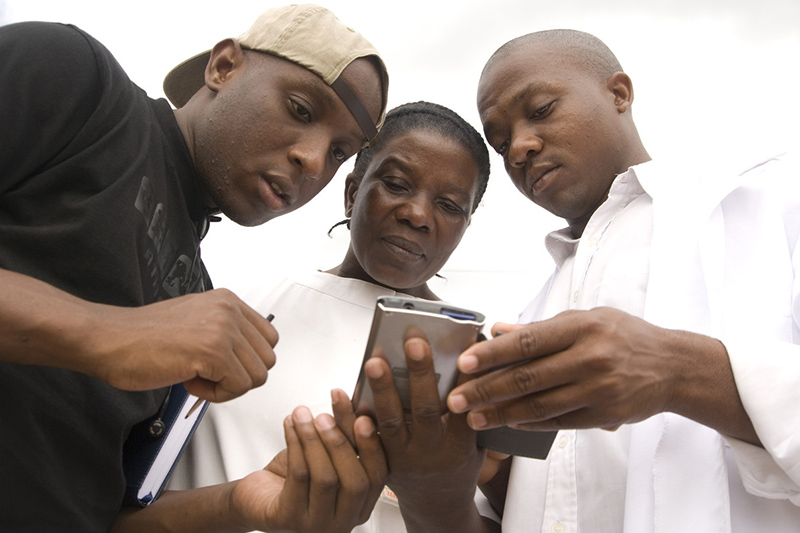
Photo Credit: FHI 360
We live in an increasingly volatile and uncertain world. The risks to much of the world’s population that stem from climatic, political and economic fluctuations have played out again and again in recent years. While emergency response and humanitarian aid still have an important role to play, the development community is increasingly interested in how to build the resilience of individuals, communities and systems not only to survive these shocks and stresses, but also to adapt to them and better prepare for future occurrences.
There is no single solution for building resilience, as it is highly dependent on the population in question, the risks they face, local infrastructure and resources, and a number of other factors. However, one tool that has the potential to facilitate increased resilience across a range of contexts is digital technology.
This is not just an abstract idea. In fact, a study on private-sector engagement in climate change resiliency concluded that “information is essential to assess and understand the direct impacts of climate change and the indirect vulnerabilities that result and to then react and adapt.” Over the past few years, rapid expansion in access to mobile technologies and developments in areas such as sensors, big data and artificial intelligence have further increased the many ways that digital technology innovations can improve resilience.
However, there is not a lot of easily accessible information on resilience-relevant digital technologies and how they might help. With financial support from the Rockefeller Foundation, we worked with resilience and technology practitioners from around the world to develop and launch a Digital Technologies for Resilience Inventory. This inventory contains more than 100 entries on technologies that are being used to enhance the resilience of individuals, families, communities, businesses and governments. The inventory makes it easier for resilience practitioners, businesses and governments to understand the options that may help them address the challenges they are facing.
The technologies in the inventory focus on a diverse mix of resilience challenges, from livelihoods to climate, health and food security. They are evenly divided between those that enable increased preparedness and those that enable people to more effectively respond to events once they occur.
Digital technology has the potential to facilitate increased resilience across a range of contexts. Click To TweetMany of the examples take advantage of smartphones, which is somewhat surprising, given that smartphone ownership in developing economies comes in at less than 50 percent. A significant number of technologies also use geospatial and ground sensor data, which are particularly relevant to climate resilience efforts. Linked to the proliferation of digital data, a smaller subset of entries in the inventory work with big data analytics. While many of the entries make use of digital technologies that have been around for years, a handful are testing emerging technologies, such as the Internet of Things (worldwide device connectivity), unmanned aerial vehicles (UAVs or drones), artificial intelligence and 3-D printing.
It is worth emphasizing that digital technologies alone are not the solution to the world’s problems, nor will they lead to increased resilience on their own. They can, however, serve as enablers for advancements, such as expanding access to information and services, improving data collection and analysis, and increasing efficiencies within existing networks. Our hope is that by starting the conversation on what is possible, we will begin to see more effective deployments of digital technology in the resilience space — and through that, we can contribute to a more resilient future.
